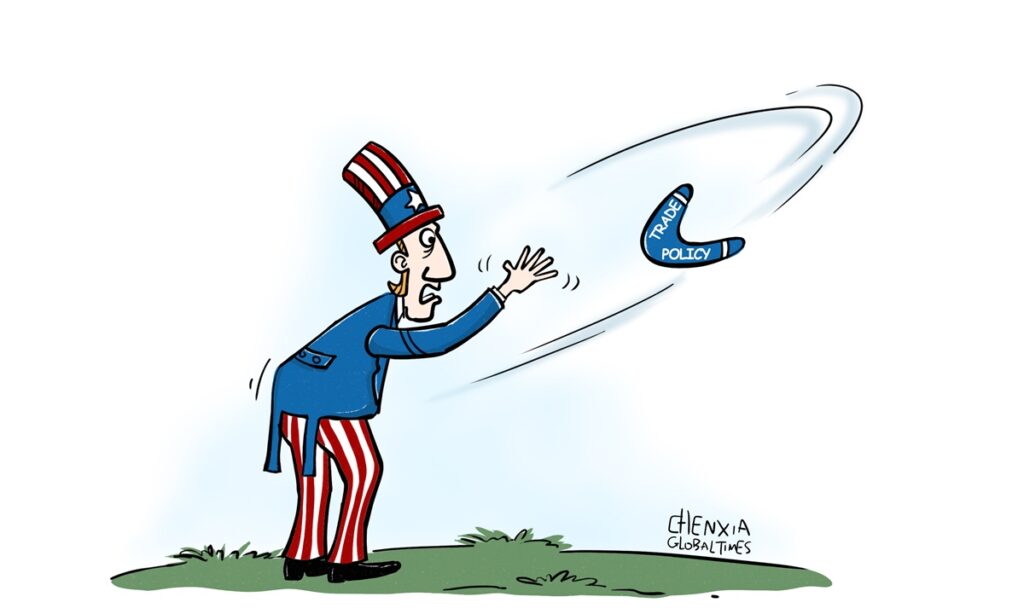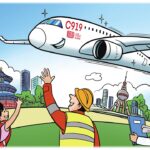Chinese Commerce Minister Wang Wentao met with US Commerce Secretary Gina Raimondo on Thursday in Washington, DC. The following day, Wang met with US Trade Representative Katherine Tai in Detroit. US’ economic and trade policy toward China became the primary concern in both meetings.
The main concerns from the Chinese side are: the US’ semiconductor policy, export controls, foreign investment review, Taiwan-related topics in the economic and trade domains, the Indo-Pacific economic framework and tariffs.
These concerns reflect an essential change in US’ strategy toward China: using financial and economic power, as well as a circle of allies to contain China’s global foreign trade.
The US is not simply blocking Chinese products being exported to the US any more but has expanded this blockade globally, aiming at the most competitive Chinese products.
For example, the US has asked allies to join forces to block the global market adoption of Huawei’s 5G technology and equipment, citing so-called security concerns.
The US has presumed that all products produced in Xinjiang are tainted with “forced labor” and has banned imports of Xinjiang-related products on the pretext of so-called human rights issues. All exports to the US that include goods made in Xinjiang must declare themselves as “self-proving innocence.”
These blocks have significantly impacted global exports to the US that use intermediate goods manufactured in China.
As of March this year, US Customs and Border Protection data shows that 3,237 shipments, valued at $961 million, have been detained under the Uyghur Forced Labor Prevention Act since it took effect in June 2022.
In simpler and clearer terms, the problem reflected in US-China trade is that the US wants the world to buy more American-made goods and no longer made-in-China.
Trade is changing the world, the status of China and the US as well as the way each country views the other.
According to Lowy Institute data, before 2000, the US was at the helm of global trade, as over 80 percent of countries and regions traded with the US more than they did with China. By 2018, that number had plummeted to just 30 percent.
China is the top trading partner of 124 countries and regions. China’s position in global trade now exceeds that of the US at its peak in international trade after World War II.
This is a position not seen since Christopher Columbus’ discovery of the New World in 1492, and one that China has earned entirely through hard work and peaceful development.
Another change in global trade that has occurred since China participated in and became a significant driver of globalization is that whatever products are now produced in China are bound to be the most inexpensive and are available to the world’s poorest and lowest-ranking populations.
Three years into the epidemic, China’s foreign trade has not fallen but risen, and its market has expanded. According to Chinese customs statistics, in 2022, China’s general trade reached 26.81 trillion yuan, an increase of 11.5 percent. China became the world’s No.1 exporter of new energy vehicles and accessories.
China has inevitably become the No.1 trading country in the world. Washington’s pursuit of a siege against made-in-China is essentially against globalization, the law of capital development, and the law of economy. The US cannot regain its position, unless it can create another world factory of the same magnitude as China on this planet, and the factory must be under the command of the US.
In light of the US-China trade issues, the primary concern for Washington should be how to perceive China’s ascent. Furthermore, it must question whether adopting a hegemonic strategy to obstruct China’s foreign trade, which undermines the global trade system, will enable the US to regain its position as the world’s leading trading power. Why should a peacefully developing China always be relegated to second place behind the US?
(Global Times)




